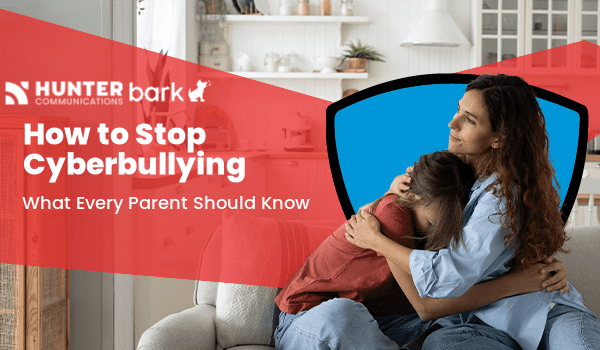How to Stop Cyberbullying: What Every Parent Should Know
Oct 13, 2023 | General, Security and Bark
We’ve witnessed firsthand just how prevalent cyberbullying is among today’s kids. More than 60% of tweens and 70% of teens have experienced it, either as a victim, bully, or witness. Unfortunately, many parents may not realize just how different cyberbullying is from the schoolyard bullying they remember from growing up, and they may not know how to stop cyberbullying today.
With 24/7 access to their phones, kids today can tease, harass, and threaten their peers around the clock and from any location. Being at home doesn’t mean you’re safe from bullies anymore. Because of this, it’s important for parents and kids to talk openly and honestly about cyberbullying. There’s a lot to learn. We’ve assembled some of the most relevant statistics about cyberbullying to use as conversation starters for you and your kids.
The more you’re prepared, the better you’ll be able to stop it if it happens
Discussing exactly what cyberbullying is with your child is a good way to help them understand all the different ways it can happen. Review the types of cyberbullying together, and then take time to come up with your own examples of what each looks like. You and your child will be better able to combat cyberbullying when you both recognize the signs easily.
More kids have experienced cyberbullying on Instagram than on any other platform at 42%, with Facebook following close behind at 37%. Snapchat ranked third at 31%.
Discovering where cyberbullying most often occurs online will help you and your child take the necessary actions to prevent it. Allowing apps like Bark to monitor for signs of cyberbullying will give you more peace of mind, knowing that you’ll be alerted if it becomes an issue.
Adolescents who engaged in cyberbullying were more likely to be perceived as “popular” by their peers.
This shocking and unfortunate statistic means that your child may be tempted to cyberbully to gain favor with their peers. In addition to letting your child know that being a bully is never OK.
Victims of cyberbullying may exhibit warning signs.
Although many tweens and teens are afraid to report cyberbullying, they may exhibit behavior that indicates that they’re struggling. This is especially true of kids who are marginalized in one way or another. Kids with autism or food allergies and kids who are racial/ethnic minorities or members of the LGBTQ community are all more likely to be bullied than their peers. Some common signs include:
- Discontinued use of their smartphones.
- Getting emotional while using their smartphones, or afterward.
- Being secretive or avoiding discussions about their online lives.
- Avoiding school or social activities.
- Changes in grades, mood, behavior, sleep, or appetite.
If you notice these behaviors, it’s best to sit down with your child and calmly ask if they’ve experienced problems with cyberbullying. Remind them of how important they are and reassure them you will not intervene without their consent.
More than half of teens have witnessed cyberbullying on social media.
Talking with your child about what it means to be an “upstander” as opposed to a bystander is a great way to help stop cyberbullying. Some kids assume that if they report bullying they will be seen as a tattletale, while others are afraid to stand up to a bully for fear they may become the next victim. Talking through the following tactics will help your child approach the situation with confidence:
- Question the bully’s behavior or redirect the conversation by changing the subject.
- Ask other friends to help stop the bully’s behavior.
- Reach out to the victim personally to let them know you don’t agree with the bully’s behavior and ask how you can support them.
Learn more about BARK and the other security products Hunter has to offer!

